#land stewardship
Text
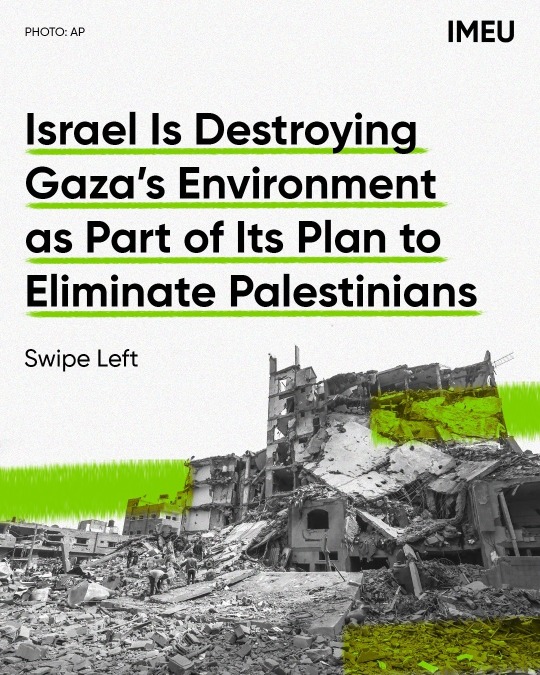
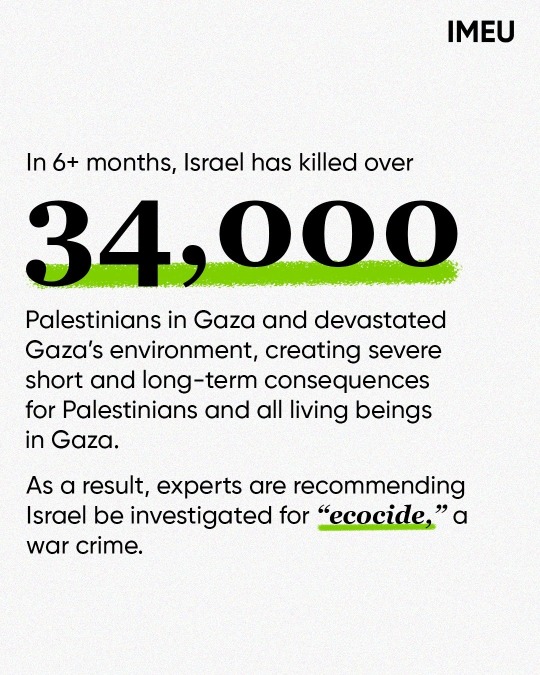
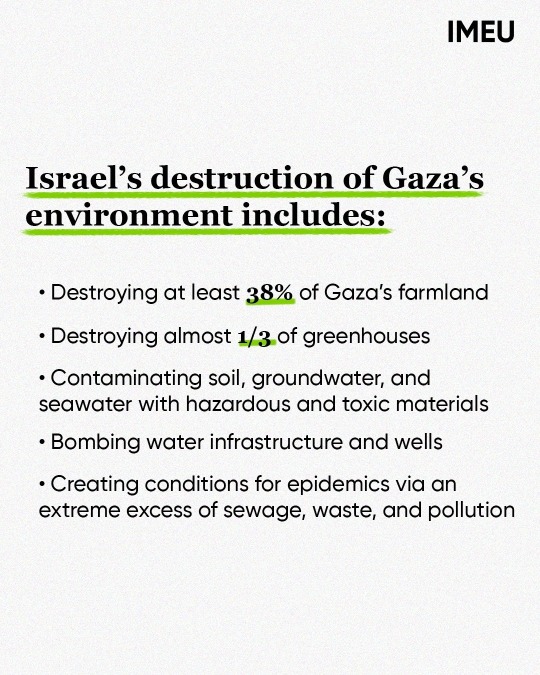



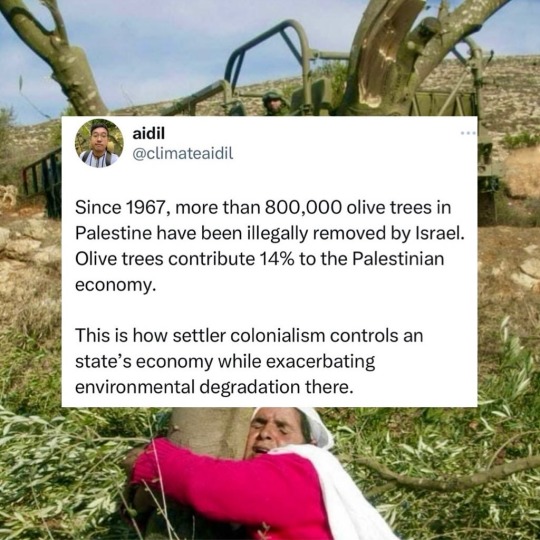

🌿An Earth Day fusion repost from @theimeu and @muchachafanzine.
🌿In honor of Earth Day, please visit @zaytoun_cic, @handmadepalestine, or @plant.eenolijfboom to plant an olive tree in Palestine. 🕊
🌿From @theimeu:
This Earth Day, we mourn the 34,000+ Palestinians killed by Israel in Gaza and Israel’s continued degradation of Gaza’s land, water, and other natural resources that make life possible for Palestinians.
In the past 6 months alone, Israel has destroyed farmland and greenhouses, contaminated natural resources with hazardous materials, bombed key water purifying infrastructure and wells, and created conditions for epidemics caused by an extreme excess of sewage, waste, and pollution.
Israel’s systematic destruction of Gaza’s environment is part of its goal of making life for Palestinians in Gaza unlivable.
Link in bio to contact your reps and urge an immediate, permanent ceasefire and the immediate suspension of all arms and funds to Israel.
Sources: The Guardian, Scientific American
🌿From @muchachafanzine:
Reminder this #EarthDay that from Turtle Island to Pa1estine, your environmentalism doesn’t mean sh!t if you don’t support giving the #LandBack to Indigenous people. 🤷🏽♀️
#land back#indigenous rights#indigenous resistance#indigenous peoples#human rights#palestine#free palestine#gaza#ecocide#ecology#environmental activism#environment#olive trees#free gaza#stop the genocide#earth day#natural resources#farming#land stewardship#israel#israel is committing genocide#israel is a terrorist state#israeli apartheid#israeli occupation#end the occupation#ceasefire now
71 notes
·
View notes
Text



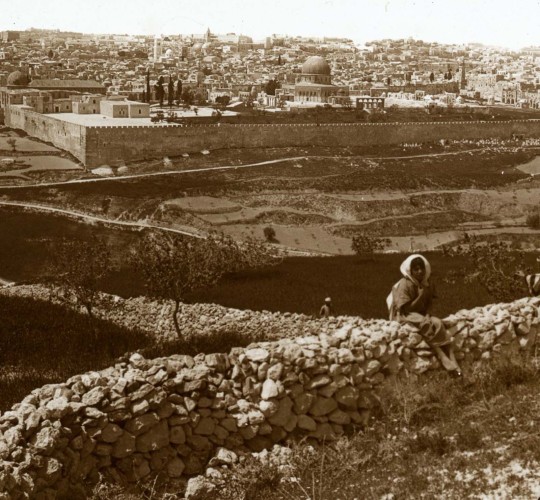




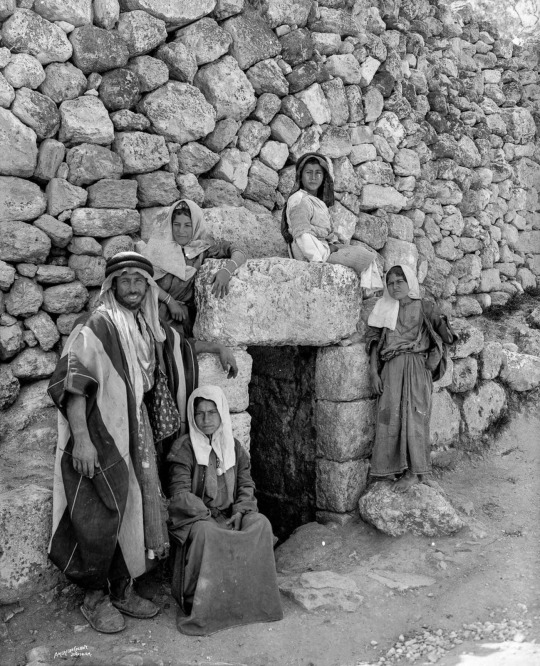

(1) A Palestinian woman picking grapes
(2) Rabeha al-Husayni poses with her teacher at Schmidt-Schule (1930)
(3) Two women work to harvest cucumber crops in Birket Ramadan, also called Naher al-Faleq (June 1940)
(4) Jerusalem from the Mount of Olives (1915)
(5) Girls waving from the Barajneh Palestinian Refugee Camp in Lebanon (1980- 1985)
(6) Graduates from the Friends School in Ramallah (1940)
(7) Abla Dajani with her bike in front of her family home in Lower Baq'a (1947)
(8) Christmas at the Christmas Herald Orphanage in Jerusalem (1919)
(9) A Bedouin family pose at the Tomb of Lazarus located near Jerusalem (1890s)
(10) A group of students in Ramah (1915)
Sources: Palestinian Museum, Interactive Encyclopedia of the Palestinian Question, British Mandate Jerusalemites Photo Library, and G. Eric and Edith Matson Photograph Collection
#land stewardship#free palestine#our history is your history#let gaza free you#history#solidarity with palestine against apartheid
62 notes
·
View notes
Text
22 September 2023 - Friday Field Notes
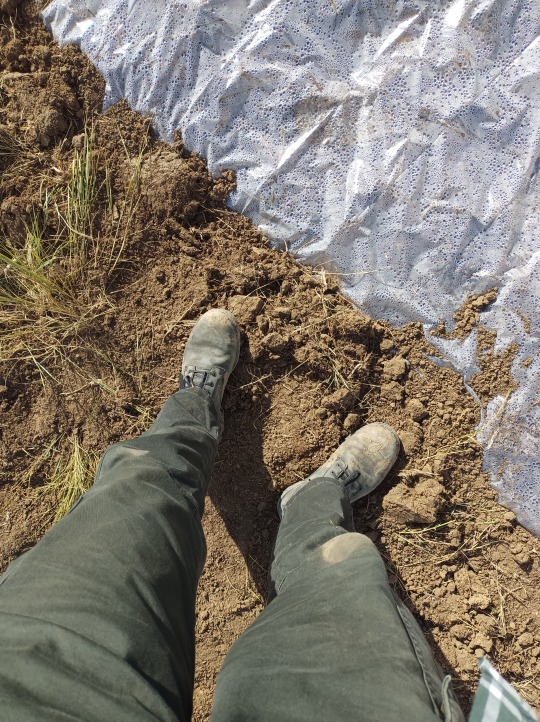
Field work is not glamorous.
It doesn’t matter what field you work in. Often times you’re outside for hours on end, the weather doesn’t cooperate when you need it too, you’re covered in sweat, in dirt, you’re overworked, you’re underpaid, your organization is understaffed, you don’t have the resources or the equipment you need to do the work, and trying to get people to give a shit and effect the change that needs to happen is a perpetual uphill battle that rivals Sisyphus’s eternal punishment. But you adapt, you improvise, and you do the work anyway.
Because it’s important. Because it matters. To me. To you. And to every living thing on this planet. You do it so things can grow and thrive.

Part of my job doing restoration work is removal and management of invasive species, like this Mullein pictured above. Now, Mullein is a plant that originated in Europe and Asia and was brought over to North America for cultivation purposes.
However, it didn't originate in the ecosystems in N. America, didn't evolve along with the local flora and fauna, it has no biological checks in the Great Plains to keep it from overrunning an area like it would in Europe or Asia. Not having any biological checks allows species to create monocultures, which isn't great because it reduces the overall biodiversity of an ecosystem, making it less robust and unable to support the vast array of wildlife you should find in a given area. Some species in the Great Plains do utilize the Mullein as a resource, but again, since it didn't evolve here many species are essentially losing food and habitat because of this plant.
Monocultures also reduce the effectiveness of a habitat's ecosystem services that help support life for all living organisms. Including us. Clean air, clean water, nutrient rich soil to support the growth of food, capturing carbon to sequester to reduce climate change... All reliant on biodiversity. All reliant on populations of native plants.
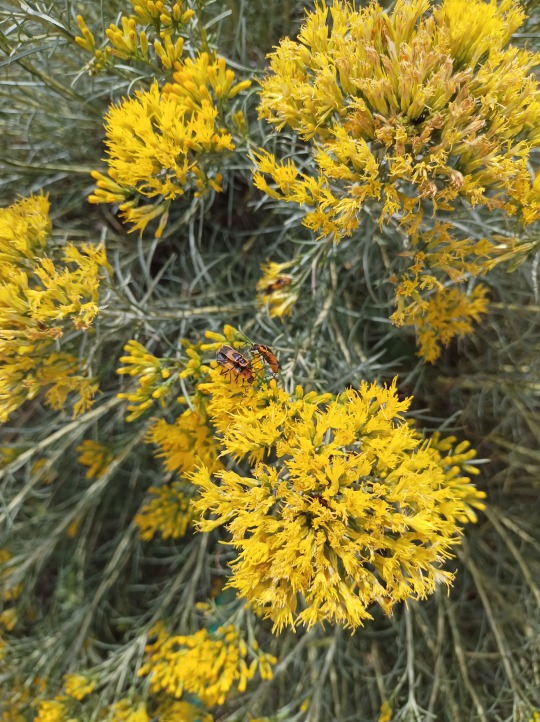

It's not enough to just remove invasive species though. You can't take something out, without putting something back in. Good land management and stewardship practices should also restore ecosystems. Rabbitbrush and Rocky Mountain Bee Plant are both species that are native to my local area, and are a resource for all manner of species.
And that Bee Plant, we planted that last season. It was the only one that grew, but look at all the seed pods on that thing! Hopefully those seeds will go on to make even more Bee Plants and support even more wildlife!
I watched this documentary series last week for work and I'd highly recommend it. It's about the native seed supply chain in the western United States for restoration efforts. A really large area, that needs as much helps as it can get.
https://ser-insr.org/native-seed-film - You can watch it in sections, or they have a couple of different lengths depending on the time you have. But if you only have 12 minutes to give, for sure watch the introduction.
Now, I'd like to point out, these large scale efforts are important, but restoration efforts don't have to be big or elaborate. If you have a spare planting pot or a backyard, you have the ability to restore native habitat. You can bring those ecosystems to you. And it doesn't necessarily require you tearing out your whole yard or sacrificing the plants you do grow.
It may require a bit more homework (you're gonna have to research what plants are native to where you live), and some trial and error, but there are a lot of gorgeous native plants out there that require very little work once they're established compared to "traditional" garden plants.
Humans have carved out huge swathes of land for our own purposes, often to the detriment of other living things and ourselves. We've destroyed entire habitats and ecosystems due to human vanity and simply walked away. Cut our losses. Those habitats and ecosystems are lost. But the land is not gone. And who's to say all those things that are lost can't be found.
It's not easy work, but with some compassion, and a little bit of knowledge, and the willingness to be patient, perhaps we can weave the land back together. Not the way it was, but rather better.
A ghost can dream, right? And perhaps this Pronghorn does too.

It's hard to appreciate the subtle beauty of the prairie. It's not a forest. Not the ocean. Most people might only see grass and not see the richness. The diversity. But I've done a shit-ton of digging this week to try and install a native plant garden.
Field work, manual labor and sweating outside with a shovel, is not glamorous.
But I'm doing this so people can hopefully see the beauty of the prairie, so they can see the beauty in the land around them and perhaps consider planting some native plants of their own. So every living thing out here, big or small, can have a home.

And here's a Megacyllene (sp?), probably a Locust Borer Beetle. It has wasp stripes to dissuade predators from trying to eat it.
#nature#field notes friday#restoration work#short grass prairie#plants#habitat restoration#native plants#locust borer beetle#pronghorn#rocky mountain bee plant#rabbit brush#mullein#land management#land stewardship#native seed restoration#little ghost on the prairie
27 notes
·
View notes
Text
https://www.popsci.com/science/hawaii-policy-transfers-astronomy-control/
#indigenous#native american#ndn#free hawaii#hawai'i#native hawaiian#mauna kea#astronomy#land stewardship#stolen land#land back
205 notes
·
View notes
Note
Do people have the right to own property?
Legally? Yeah you can own land. Morally? That’s a bit more grey. I tend to think land stewardship is a more ethical concept. I often look to my indigenous friends for guidance on this.
#property#property rights#land ownership#owning land#land back#steward of the land#land stewardship#indigenous people#indigenous land#colonialism#colonists#stolen land#leftist#leftblr#communist#socialist#communism#socialism#anti capitalist#anti capitalism#leftist politics#human rights#anon#leftist answers#questions
34 notes
·
View notes
Text
91 notes
·
View notes
Text
Since many of these traditional fire stewardship practices are criminalized under Canadian law, Indigenous people have not been able to manage the flammable materials near their local land.
Now, due to climate change, higher than normal droughts and years of not practicing prescribed fires, Canada is seeing its worst wildfire season in history in terms of intensity and the number of fires.
Sissi De Flaviis at CTVNews.ca. Wildfires are disproportionately harming Indigenous communities
8 notes
·
View notes
Text
It's interesting that pro-nature types seem to have settled on 'biodiversity' as the measure of Goodness for an ecosystem or an area of land.
I think it's just a placeholder for 'naturalness', because un-humanified ecosystems tend to be very biodiverse (not that we've really seen many, especially since the age of discovery when humans found the last few islands).
Obviously everything is as natural/unnatural as anything else, but if we define natural as [being completely unaffected by and uninvolved with humans], any constant/stagnant state is unnatural for any area of land. A rainforest could desertify and most of the biodiversity disappear, and it would be just as natural. If a supernova boiled the oceans away and killed all life on Earth it would be completely natural - but Chris Packham would still protest it.
In land stewardship discussions I think it's useful to be very clear about what our actual aims are. 'Goodness' only means that it benefits sentient humans (and in my opinion many non-human animals). When we protect a rainforest it is because:
More biodiverse ecosystems tend to absorb more CO2, so climate change will slow down and humans will be happier
Humans tend to like that nature exists, and to look at it and be surrounded by it (including religious and emotional connections)
More biodiverse ecosystems often contain resourcess which are very useful to humans but aren't economically favourable to preserve under capitalism (e.g. forest gardens, huntable animals, undiscovered (or sometimes 'undiscovered') medicines)
I'm sure there are other benefits that I can't think of at the moment, but the point is that if something is 'good' it has to be good for someone.
I'm much less certain in saying that 'natural' areas are better to live in for non-human animals, but they do seem to support more lives. Whether that is Good is an open question.
Concomitantly it is also often Good to destroy part of an ecosystem. Humans need to eat food and subsistence farming sucks - a bit of wheat monoculture is very efficient and makes a lot of people's lives better. I like living in a warm dry house, and those make a lot of people's lives a lot better. etc.
In conclusion: anprims are full of shit.
#nature#conservation#land stewardship#if it's not clear im a utilitarian#i also take atheism as an axiom in this#unnecessary philosophising#been a while since i did and effortpost. that's my tag for them from ages ago. not sure what's in it or if I agree with it all#vegan
2 notes
·
View notes
Text
Evicted from its ancestral land in the 1970s, a Maasai community has made good on its promise to reclaim the territory. Now it’s working to repeat the success elsewhere
Indigenous leaders across the globe are winning game changing environmental victories against the odds. In our ‘guardians of the wild’ series, we hear from those who have defeated oil companies, cancelled mining contracts and won the right to stewardship of millions of acres of land, risking their lives to protect the wildest places on our planet.
Read more...
14 notes
·
View notes
Text
Reading Rec List (to add to):
Braiding Sweetgrass: Indigenous Wisdom, Scientific Knowledge, and the Teachings of Plants by Robin Wall Kimmerer
Gathering Moss: A Natural & Cultural History of Mosses by Robin Wall Kimmerer
All That Remains: A Renowned Forensic Scientist on Death, Mortality, and Solving Crimes by Sue Black
Lessons From Plants by Beronda L. Montgomery
How to Do Nothing: Resisting the Attention Economy by Jenny Odell
Lighting the Seventh Fire: The Spiritual Ways, Healing, and Science of the Native American by F. David Peat
"All The Real Indians Died Off" And 20 Other Myths About Native Americans by Roxanne Dunbar-Ortiz and Dina Gilio-Whitaker
Are Prisons Obsolete? by Angela Y. Davis
Essential Judaism: A Complete Guide to Beliefs, Customs, and Rituals by George Robinson, updated edition
People Love Dead Jews by Dara Horn
The Red Tent by Anita Diamant
Judaism's 10 Best Ideas: A Brief Guide for Seekers by Arthur Green
My Jewish Year by Abigail Pogrebin
Here All Along: Finding Meaning, Spirituality, and a Deeper Connection to Life — in Judaism by Sarah Hurwitz
Reproduction on the Reservation: Pregnancy, Childbirth, and Colonialism in the Long Twentieth Century by Brianna Theobold
#reading list#book rec#ndn tag#land stewardship#death positivity#love and grief#prison abolition#judaism
53 notes
·
View notes
Text
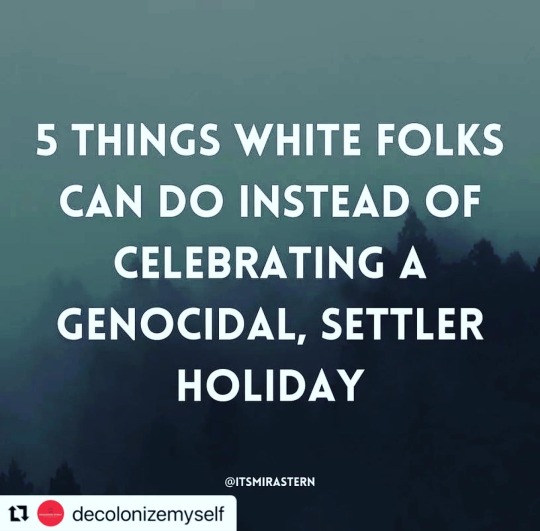
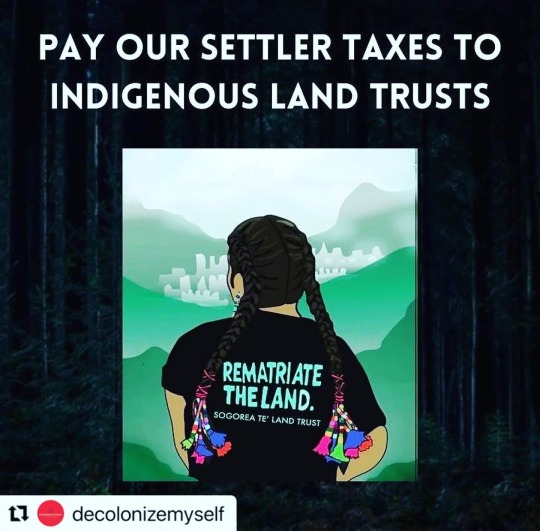
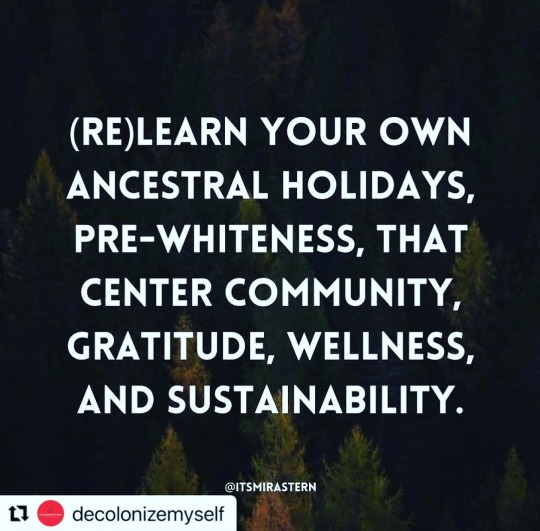
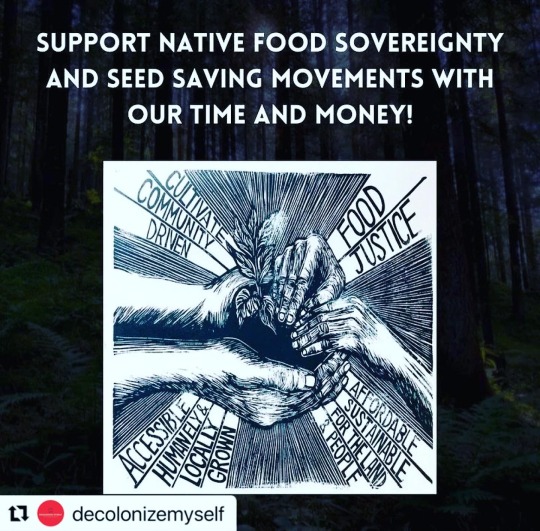
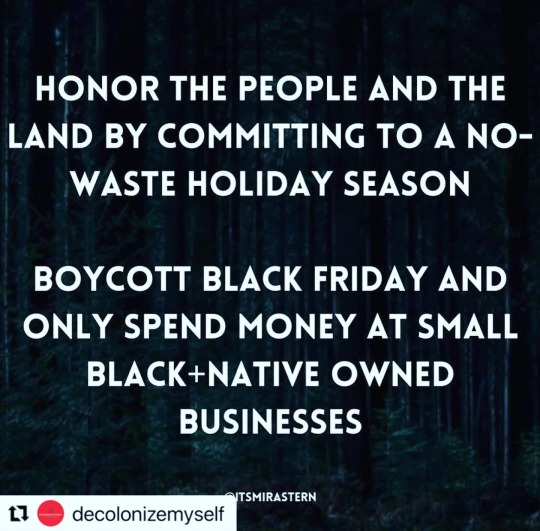
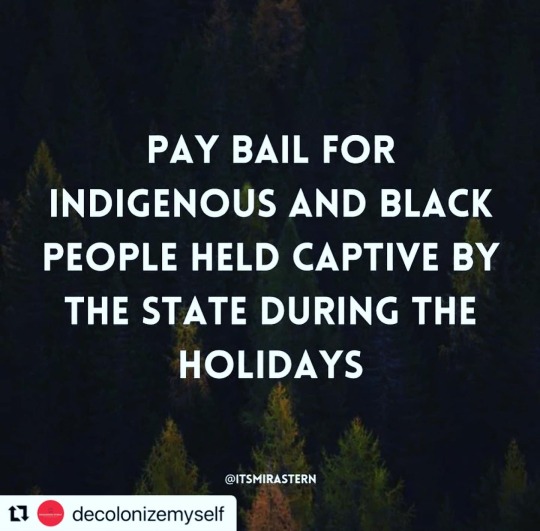
Even though I’m gathering with some family in an inadvertent commemoration of this “holiday”, I’m going to try to use it - as I did last year - as an opportunity to encourage donations to our local tribes. This year I’m also going to discuss gathering for Hanukkah and Rosh Hashanah instead, and I’m going to try and make a list for any friends & family who want it of BIPOC-owned businesses and causes to support.
#Repost @decolonizemyself with @use.repost
#Repost @itsmirastern — Links in bio for more ideas! 'another year and another opportunity to switch it all up and work for repair. ⚡️ if we’re committed to rewriting narratives, we have to take bold moves to do so. when my wifey and i began to boycott the holiday, it felt lonely, i longed for community and gathering. i mourned giving up the childhood memories i kept trying to create as an adult. but what nourishes me much more is knowing i have a hundred other opportunities to center into gratitude, land reverence, and community beyond the last thursday in november. ⚡️ especially for us white folks and other non-white settlers…divesting from the american regime of colonial whitewashing is our only salvation- physical, mental and spiritual. we’ve all been dragged into the lies of american amnesia and hegemony, but our power lies in our commitment to reshaping. ⚡️ here are some alternatives to commemorating thursday’s holiday. message me if you want handles or links to any of the suggestions here! ⚡️ what other practices or reimaginations allow you to resist thankstaking? what movements or individuals do you want to support this season? please share below!
#thankstaking#thanksgiving#decolonisation#indigenous rights#indigenous sovereignty#landback#consumerism#bail funds#holidays#colonialism#settler colonialism#indigenous people#native american heritage month#Native American#activism#land stewardship#us history
234 notes
·
View notes
Quote
The Chumash are looking to Mai Ka Pō Mai – a Hawaiian initiative that brings together federal agencies and Indigenous people to manage the land in the north-western Hawaiian islands – for inspiration. Such a collaboration has yet to translate to the US mainland , where for centuries government agencies have been at odds with Indigenous stewardship.
“When land is conserved, native people are also eliminated from it,” Palumbi says. “That’s happened in pretty much every national park. There’s a strong movement to reverse that change but the damage has already been done.”
‘Six times the size of Yosemite’: the new tribal sanctuary off the super-rich California coast
https://www.theguardian.com/environment/2023/may/18/six-times-the-size-of-yosemite-the-new-marine-sanctuary-for-the-super-rich-la-coast
#Chumash#California Indigenous#native american#marine sanctuary#Central Coast California#California#land stewardship#land use#land management
2 notes
·
View notes
Text
One of my most important life goals is to know someone who takes care of a lot of sheep. Please let me learn from you.
I think I’m too disabled to ever care for sheep, and I don’t think I’ll ever have the resources for it. But it’s the thing I want the most before I die. Just learning about it would mean a lot to me tho.
If ur a shepherd or other sheep-tender, i would love for you to share with me. Pleeeease
6 notes
·
View notes
Text
Sssssssssssup tho?
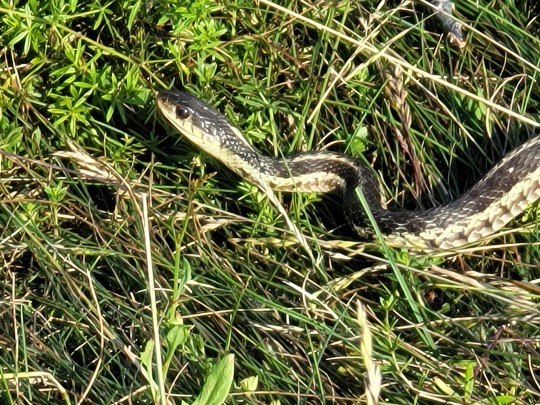

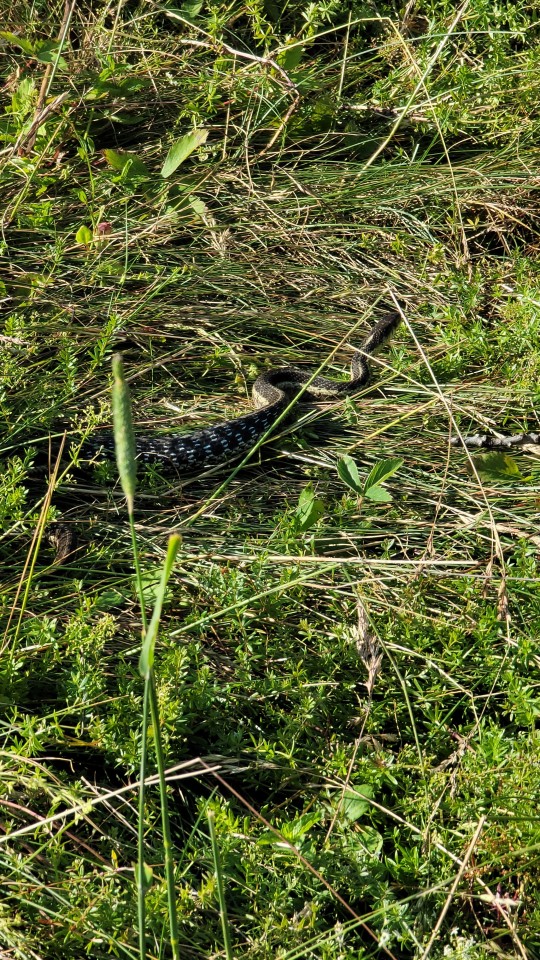
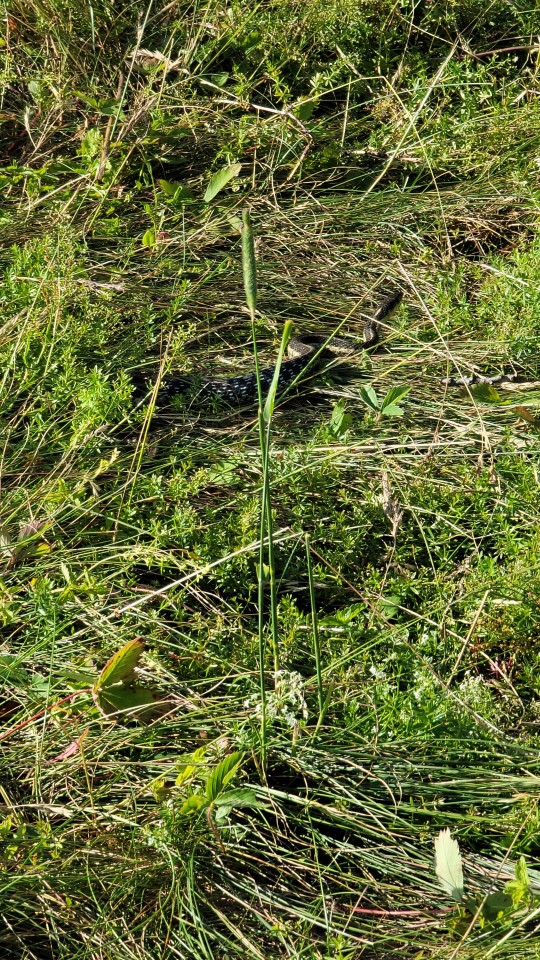
2nd eastern garter snake I've seen chilling. One down by the house and another up around compost pile 1.
Another sign of a healthy ecosystem. Please oh please eat some mice or better yet some chipmunks.
2 notes
·
View notes
Text
20 notes
·
View notes